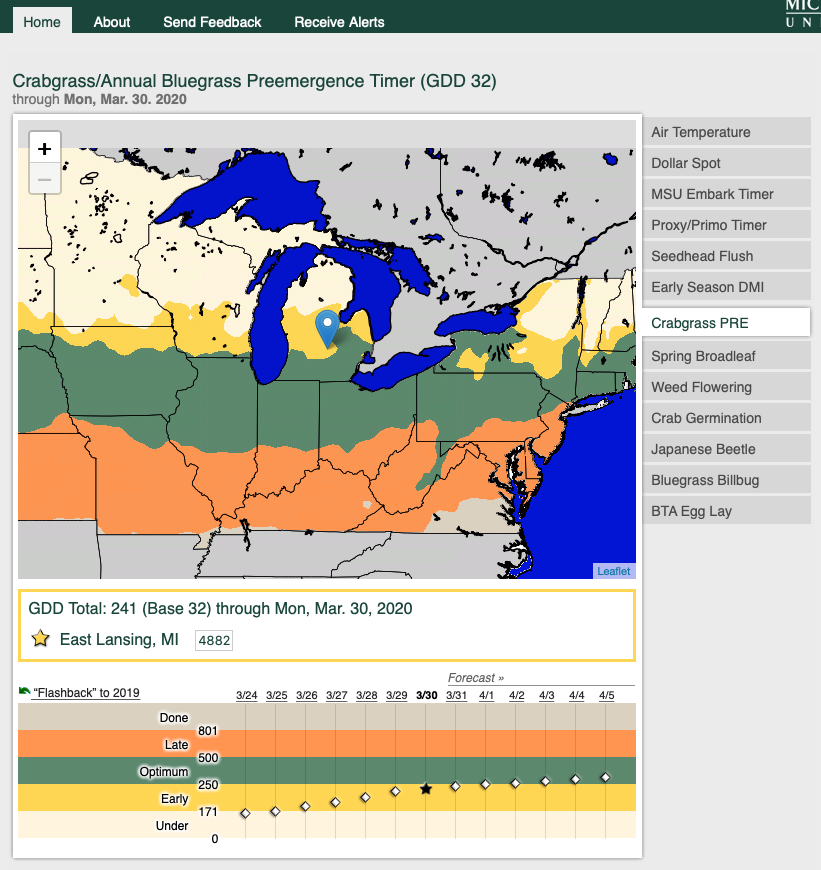Spring lawn care tips for the do-it yourselfers
Spring has sprung and with temperatures forecast to warm considerably in the next week, many do-it yourselfers or those simply looking for something to do outside their home will be venturing out into their lawns.

Raking away debris and dead grass
Upon first sight in the spring, many lawns look less than perfect. Your lawn may have damage from snow mold, pets or pesky critters like voles and moles. I haven’t observed too much snow mold this spring, which isn’t surprising considering the relatively late arriving and short winter, but there’s still the normal matting of turf in areas where snow was piled. If you’re like me and have multiple dogs in your household who tend to frequent the same lawn area all winter long, then you’re also dealing with additional localized pet urine damage.
To facilitate quicker regrowth, lightly rake the turf with a leaf rake, not a garden rake. Raking will remove some of the dead, blighted leaf blades and facilitate turfgrass recovery as temperatures warm. I wouldn’t worry about raking the entire lawn, just focus on the areas with the most damage.
Crabgrass preemergence applications
With respect to making crabgrass preemergence applications to turfgrass, many locations in Mid- and southern Michigan are not approaching the optimum application timing window. Summer annual grasses such as crabgrass require proper soil temperature and moisture to germinate and establish. Eighty percent of germination will occur when the 0- to 2-inch depth soil temperature is consistently reaching 60-70 degrees Fahrenheit. As of March 30, 2020, at the Michigan State University Hancock Turfgrass Research Center, the 2-inch soil depth temperature is 45 F.
Another great tool for monitoring and predicting when to apply pre-emergence herbicides for crabgrass control is to use growing degree days (GDD). We have a GDD model available at GDDTracker.net that uses GDD to indirectly measure soil temperatures in a turf situation (enter your zip code above the map and click on the Crabgrass PRE button).
The target range for this model attempts to predict when the 0- to 2-inch depth soil temperatures consistently reach 50-55 F and therefore provides adequate time for the pre-emergence herbicide to be applied and watered in before crabgrass germination occurs. Through March 30, our GDD model for East Lansing, Michigan has accumulated 241 GDD; the optimum range for preemergence applications is between 250 and 500.
You don’t have to apply the first day the model indicates optimum. In most years, we stay in the optimum application window for at least a couple weeks, if not longer. There’s a good chance many of you don’t have crabgrass preemergence herbicide on hand; I wouldn’t worry about it too much right now, as you still have options. Herbicides that contain the active ingredient dithiopyr (Dimension) are effective up to the two-leaf stage of crabgrass, which even this year probably wouldn’t occur until early May. Maybe this is the year you don’t apply a crabgrass preemergence herbicide, so look at it this way: you’ll see how much crabgrass invades your lawn. You may find if you have a dense, healthy lawn that you don’t have much crabgrass invasion at all.

Early season fertilizer applications
Many early season fertilizer applications are made in combination with crabgrass preemergence herbicides. If you have fertilizer on hand and are thinking of making an application, wait until the turf has fully greened-up and grown enough that mowing is necessary. Soils are still very cold and until they warm, the turfgrass is not going to be actively growing nor taking up nutrients.
Rolling lawns
Be careful rolling lawns. Following the recent rains, many areas are still very wet and rolling might actually do more damage than good. Rolling saturated soils can result in soil compaction. Rolling is popular this time of year to flatten out mole tunnels and lumps and bumps from frost heaving during winter, but it’s better to wait until the soils dry then to do it now and risk making a problem worse.



 Print
Print Email
Email